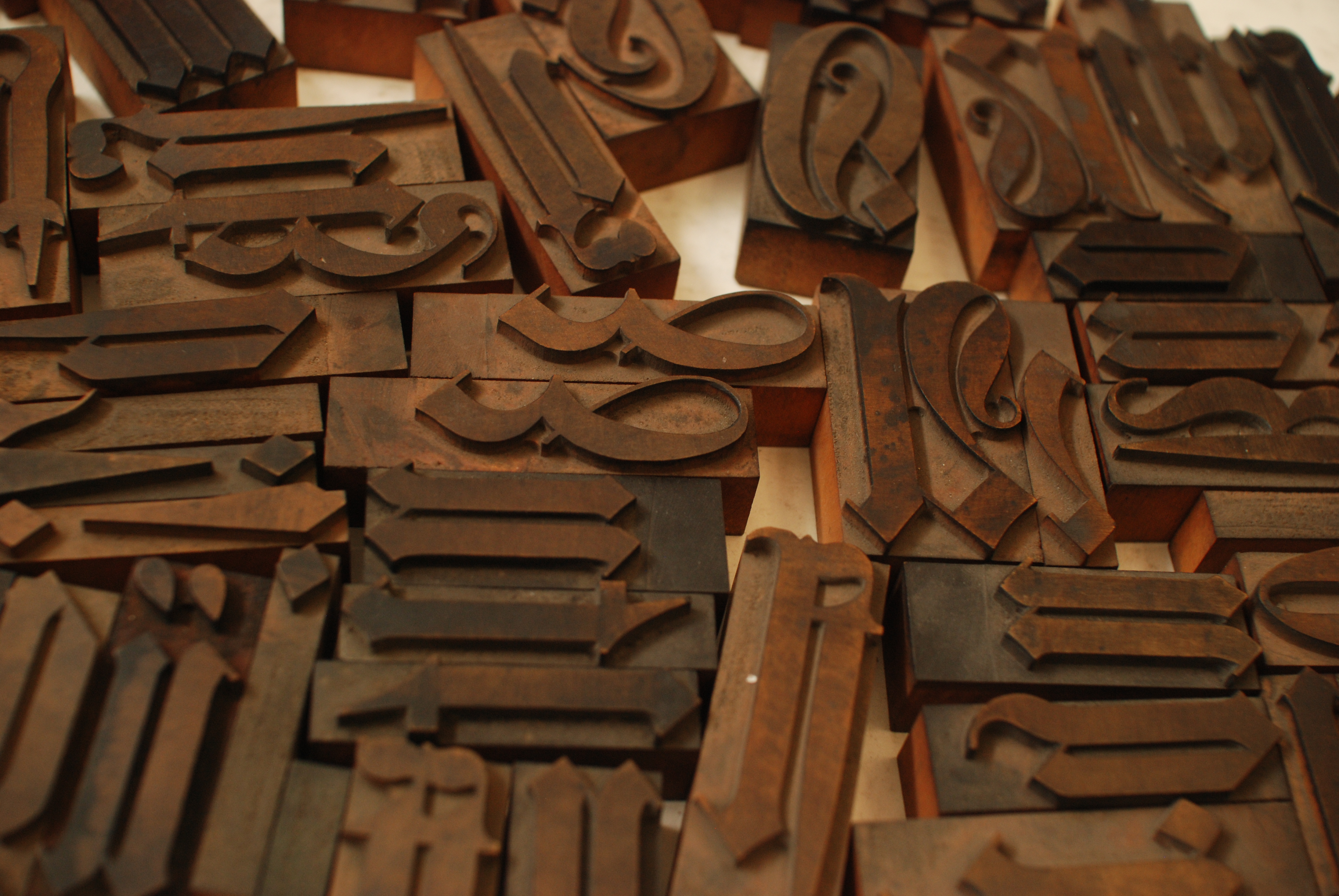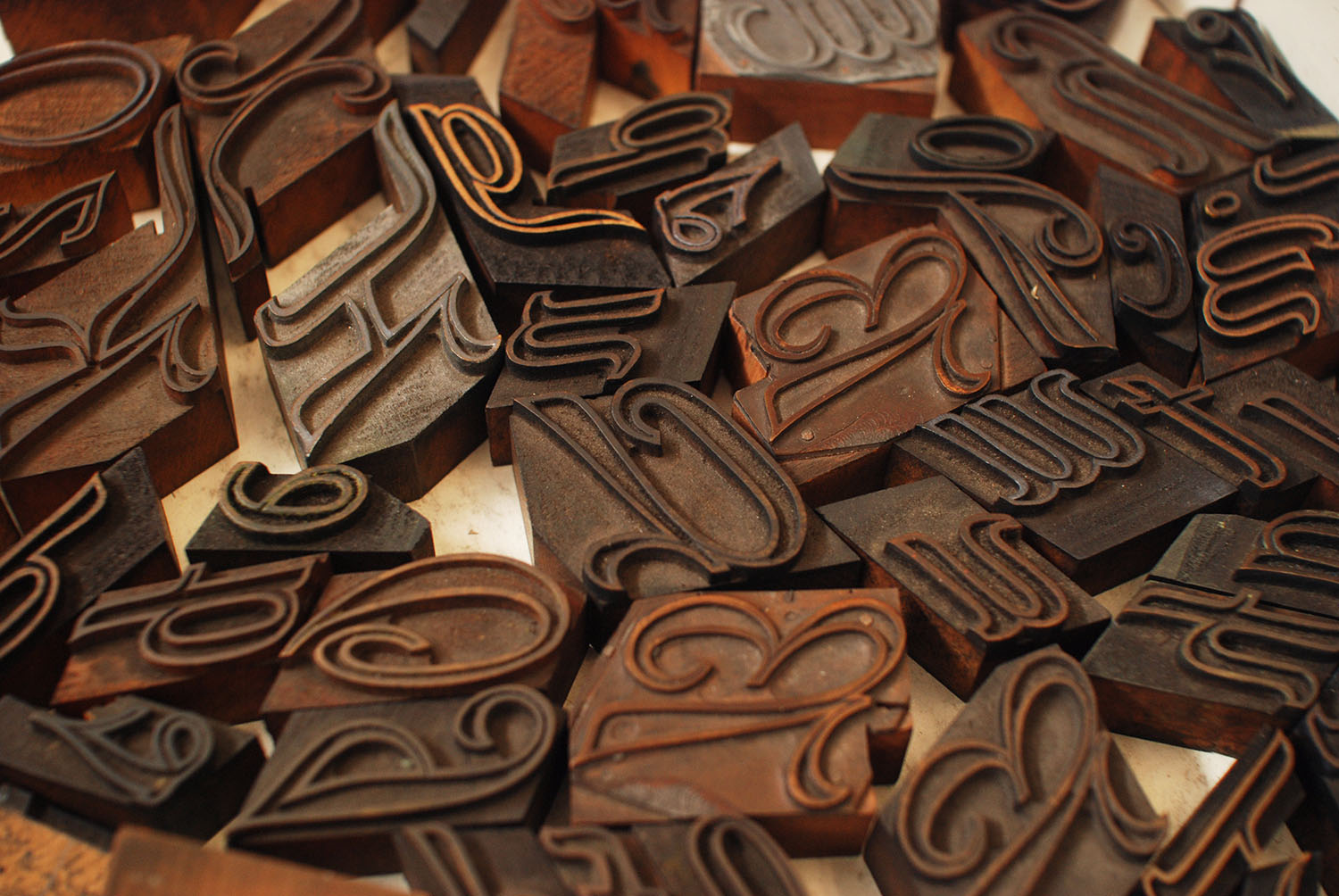Read More
Blackletter is a general name used to describe broad-pen scripts developed in the Middle Ages. They are called blackletter because the darkness and denseness of the letters overpowers the lightness of the page. There are several distinct styles of blackletter, including Textura, Rotunda, Schwabacher and Fraktur; however, the blackletter types in the RRK are predominantly Fraktur. Fraktur, developed early in the sixteenth century, is named for its distinctive broken or fractured appearance, which emphasizes the transition points between strokes. Because German-speakers and some other central Europeans continued to use blackletter script and type throughout the nineteenth century, these typefaces were also commonly referred to as “Germans.”
The first blackletters in wood type were two designs in the Textura style called Black and Open Black, which appeared in George Nesbitt’s 1838 First Premium Wood Types, Cut by Machinery. Wells & Webb showed a Fraktur style named German in their 1854 Specimens of Wood Type, which prevailed throughout the 1850s and 1860s. However, William Page began to patent blackletter types in 1866, and in his October 1870 Specimens of Wood Type, all fifty-four pages were exclusively dedicated to blackletter types, including several intricate chromatic designs.
Brush Script wood type is modeled on nineteenth-century sign-painters’ informal script lettering styles; relatively few of these faces were produced.
Read More
Brush Script typefaces are based on cursive handwriting with a brush rather than a flexible steel nib or a broad-edged pen. The particular instrument used imparts a specific contrast to the letter’s strokes. Brush scripts tend to be informal designs and often resemble sign-painter’s lettering.
The first script to appear as wood type was E.R Webb’s Title Script in his 1854 Specimens of Wood Type. The first Brush Script to appear as wood type was J.G. Cooley’s Brush Script, first shown in his c.1859 Specimens of Wood Type. Yet scripts and brush scripts remained a only minor presence in wood type catalogs. The broadest range of scripts shown by one manufacturer occurred when seven styles appeared in William Page’s 1882 Specimens of Wood Type & Borders. Even in Hamilton’s 1906 comprehensive reference catalog Specimens of Wood Type, of the two hundred and forty pages in the catalog, only six pages were dedicated to scripts.












